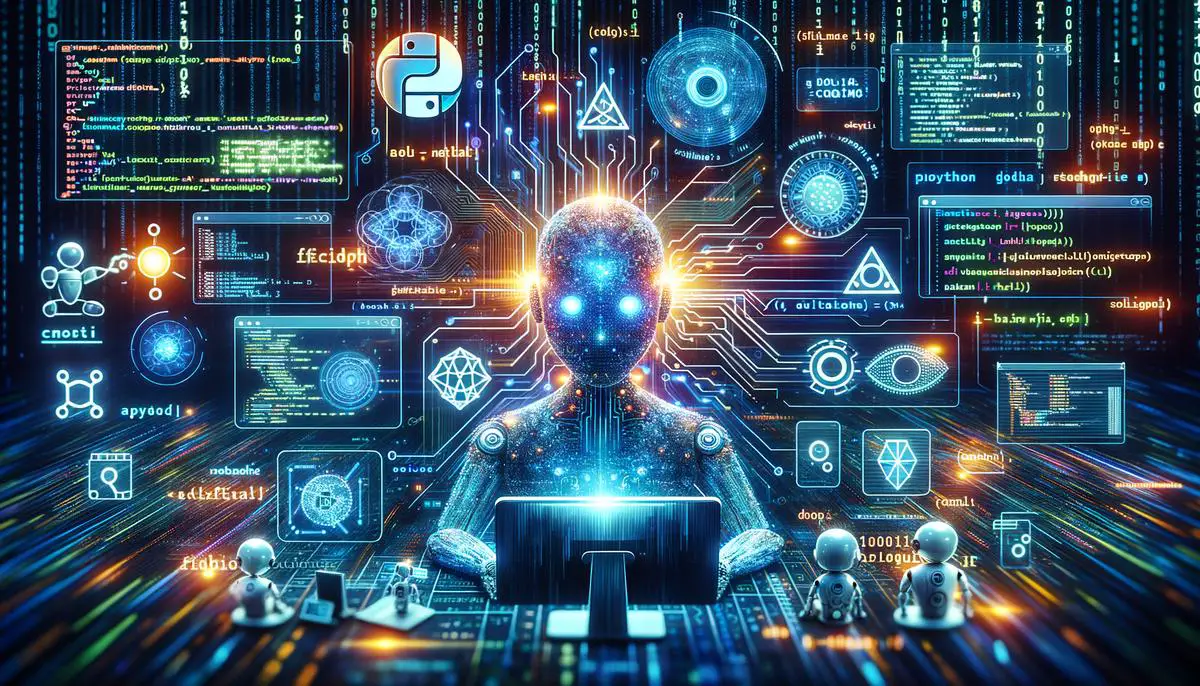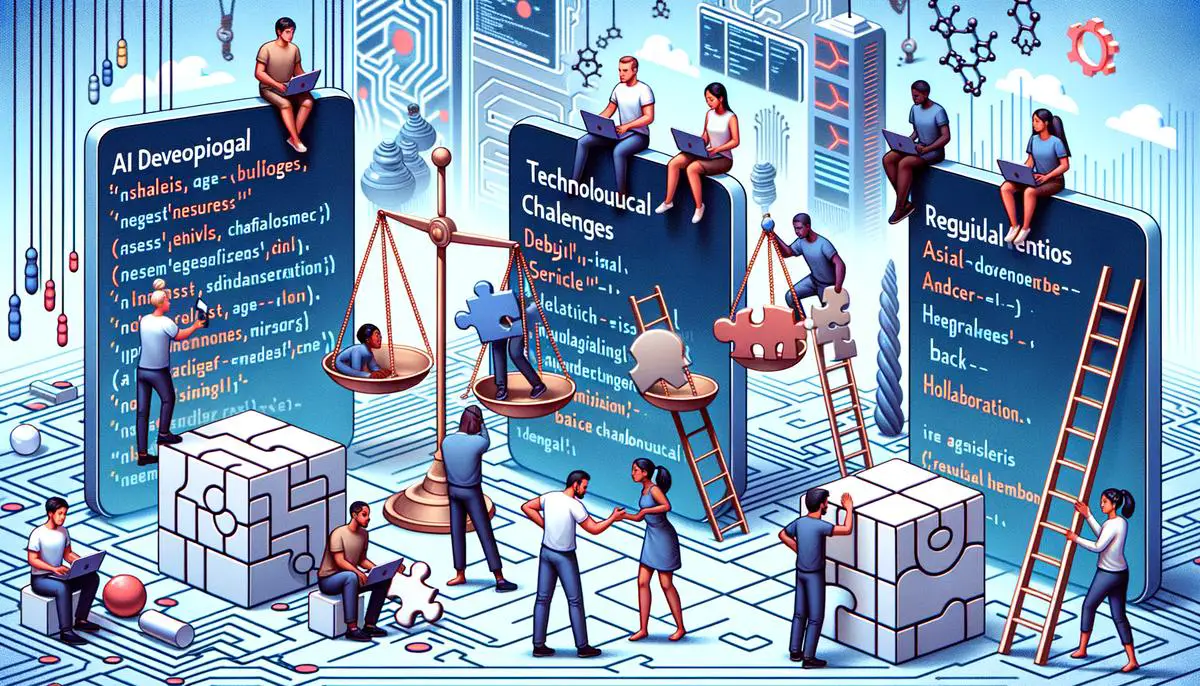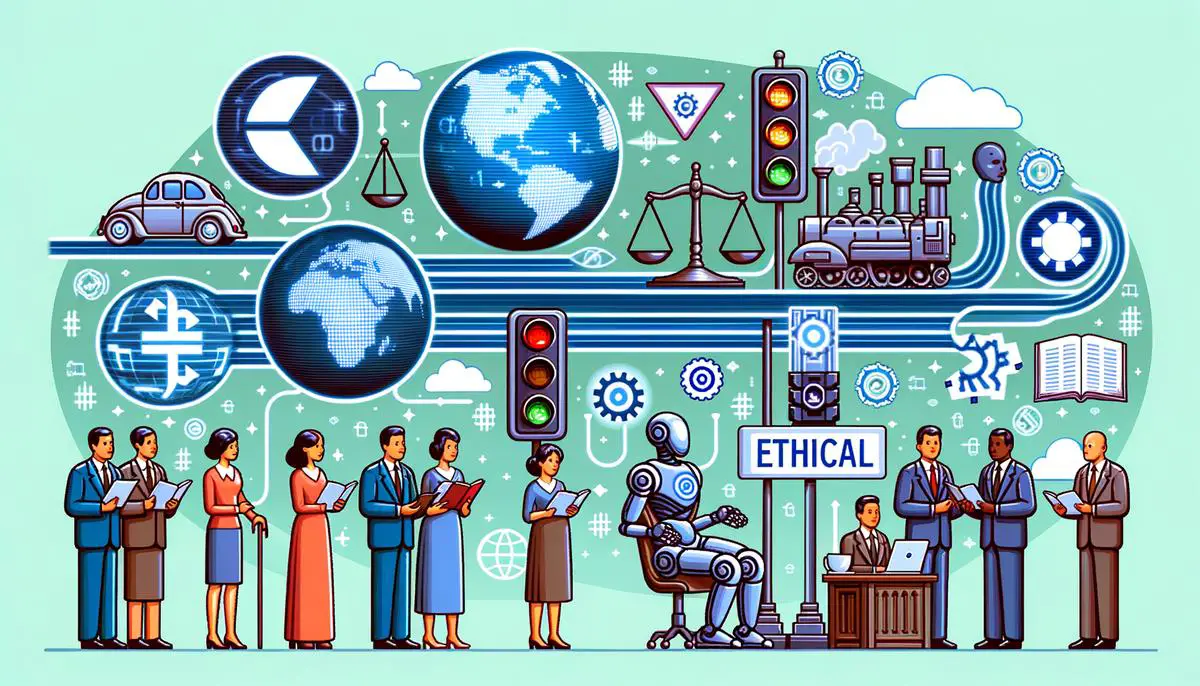Fundamentals of AI Programming
Understanding the Backbone of AI Programming
At the core of Artificial Intelligence (AI) programming lies a complex, fascinating structure. It’s this backbone that enables machines to emulate human intelligence, making decisions, recognizing speech, and even driving cars. Let’s peel back the layers and dive into what makes AI programming tick.
AI programming bases itself on algorithms. Think of these as detailed instructions or rules that guide computers on how to solve problems or perform tasks. These algorithms range from simple formulas to highly complex procedures, ensuring machines can analyze data, learn from it, and make predictions or decisions based on this learning.
Data is the fuel that powers AI. For an AI system to learn, it requires vast amounts of data. This data could be anything from images for a computer vision system, text for natural language processing, or numbers for predictive analytics. The more quality data an AI system is fed, the more accurate and efficient it becomes in its tasks.
Another pivotal element is Machine Learning (ML), a subset of AI. ML enables computers to learn from and make decisions based on data, without being explicitly programmed for each task. This learning process involves feeding data into models, which the AI system then uses to improve its performance on given tasks over time. Essentially, it’s all about pattern recognition and learning from past experiences.
Deep Learning, a subset of ML, deserves a special mention. It’s inspired by the human brain’s own network of neurons and enables computers to process data in complex layers. This is what allows machines to recognize speech or identify objects within images with high accuracy. Deep learning models, particularly neural networks, are intricate but form the essence of advancements in AI technology.
Programming languages, such as Python, Java, and R, are the tools that bring these elements together. Python, especially, stands out for its simplicity and the extensive libraries it offers for AI and ML projects. These languages allow developers to write the algorithms and build the models that lie at the heart of AI systems.
Looking into the technical infrastructure, powerful computers and processors are mandatory. AI and ML processes often require significant computational power, especially for tasks involving large datasets or deep learning. Moreover, specialized hardware like GPUs (Graphics Processing Units) has become increasingly important for accelerating these compute-intensive tasks.
In summary, the backbone of AI programming is multifaceted, involving a blend of sophisticated algorithms, vast datasets, machine learning techniques, programming languages, and robust computational infrastructure. Together, these elements enable machines to mimic human intelligence, revolutionizing technology and how we interact with it. AI programming is not just about writing code; it’s about creating a foundation for machines to learn, grow, and evolve in intelligence over time.

AI Programming Tools and Libraries
Exploring the Engine Room: Additional Tools Powering AI Development
As the landscape of artificial intelligence (AI) continues to evolve, understanding the mechanisms behind its growth becomes crucial. Beyond the foundational elements like algorithms, data, and machine learning, there are additional, often overlooked tools and technologies that play pivotal roles in AI development. These tools not only enhance AI programming but also refine and expedite the process of creating advanced AI systems.
Integrated Development Environments (IDEs)
Integrated Development Environments, or IDEs, serve as the command centers for AI programmers. They provide a comprehensive environment where coders can write, test, and debug their code. For AI development, IDEs like Jupyter Notebook have become indispensable. Jupyter, in particular, supports Python, a leading language in AI programming, and offers an interactive platform that allows developers to include live code, equations, visualizations, and narrative text all in one document. This interactivity is especially beneficial for experimenting with AI algorithms and analyzing data sets.
Cloud Computing Platforms
The scalability and flexibility of cloud computing platforms, such as Amazon Web Services (AWS), Google Cloud, and Microsoft Azure, have unlocked new horizons for AI projects. These platforms offer powerful computing resources on demand, eliminating the need for AI developers to invest in expensive hardware upfront. Moreover, cloud platforms provide access to specialized AI services and APIs that can be integrated into AI projects to add functionalities like natural language processing, image recognition, and more, without the need for building these components from scratch.
Open-Source Libraries and Frameworks
The open-source movement has significantly accelerated AI development. Libraries and frameworks such as TensorFlow, PyTorch, and Scikit-learn offer pre-built functions and tools for machine learning and deep learning. These resources enable developers to focus on solving unique problems rather than getting bogged down in the intricacies of algorithm implementation. By standing on the shoulders of these open-source giants, developers can facilitate the rapid prototyping of AI models.
Collaboration and Version Control Tools
AI development is rarely a solo journey. Collaboration tools like GitHub allow teams to work together seamlessly, regardless of physical location. These platforms not only facilitate code sharing and collaboration but also provide version control. Version control is crucial in AI projects, where multiple iterations and experiments are the norms. It ensures that changes can be tracked, and different versions of the AI project can be managed effectively.
Visualization Tools
Data visualization plays a crucial role in AI development, particularly in the phases of data exploration and result interpretation. Tools like Matplotlib and Seaborn in Python enable developers to create a wide range of static, interactive, and animated visualizations. These visualizations are key to understanding the underlying patterns in data and the behavior of AI models, providing valuable insights that guide further development.
Continuous Integration and Deployment (CI/CD) Systems
As AI systems move from development to production, CI/CD systems become indispensable. These systems automate the testing and deployment of AI applications, ensuring that updates can be applied frequently and reliably. CI/CD practices, along with containerization tools like Docker, facilitate the smooth operation of AI applications across different environments, thereby enhancing the deployment process and ensuring consistency across development, testing, and production stages.
In conclusion, while the core elements like algorithms, data, and machine learning frameworks form the skeleton of AI development, it is these additional tools and technologies that breathe life into AI projects. They not only streamline the development process but also open up new avenues for innovation, making the journey of AI development as exciting as its destination. From the interactive coding environments of IDEs to the collaborative ecosystems of version control platforms, these tools are the unsung heroes powering the AI revolution.

Challenges in AI Programming
AI developers are tasked with navigating through a complex and evolving landscape, where they not only have to master technical skills but also tackle a wide array of challenges. One significant hurdle they face involves ethical considerations and bias in AI algorithms. The development of AI systems requires input data to learn from, and if this data is flawed or biased, the AI can inadvertently learn and propagate these biases. Ensuring fairness and eliminating prejudice in AI models requires diligent oversight and a comprehensive understanding of both the data used and the societal context it may affect.
Another considerable hurdle is the dynamic and fast-paced nature of AI technology itself. The field is advancing at such a rapid pace that keeping up with the latest methodologies, tools, and best practices can be overwhelming. This constant evolution demands from developers not only a commitment to lifelong learning but also flexibility to adapt and incorporate new knowledge into their existing projects without compromising on quality or performance.
Interpreting complex AI models – particularly those in the realm of deep learning – poses its own set of challenges. As these models become more sophisticated, they also become less transparent, making it hard to understand how they make decisions. This ‘black box’ problem complicates debugging and improvement processes and raises concerns about accountability and trustworthiness in AI applications, especially in critical areas like healthcare or autonomous vehicles.
Collaborating effectively across multidisciplinary teams is yet another hurdle. AI projects often require the combined expertise of software engineers, data scientists, domain experts, and more. Facilitating smooth communication and collaboration among these diverse groups, each with its own jargon and perspectives, is crucial for the success of an AI project, but achieving it can be a daunting task.
Lastly, regulatory and compliance issues present a significant challenge. As governments and international bodies introduce laws and regulations to address privacy, security, and ethical concerns around AI, developers must ensure that their projects comply with these legal frameworks. Navigating the complexities of legislation across different jurisdictions can be laborious and requires a thorough understanding of both the legal landscape and the technical aspects of AI.
Navigating these hurdles requires a multifaceted approach, blending technical expertise with ethical considerations, continuous learning, effective teamwork, and a keen awareness of the regulatory environment. Despite the complexities, overcoming these challenges is crucial for harnessing the full potential of AI technology to innovate and solve real-world problems.

Future Trends in AI Programming
As we delve into the future of AI programming, we recognize it is not just about the algorithms, data, or the sophisticated hardware that powers these systems. The journey ahead involves an intricate dance between innovation and the ethical compass guiding these advancements. With the foundation laid by machine learning, deep learning, and the myriad of tools and programming languages at our disposal, where do we go from here?
The frontier of AI programming is expansive, stretching into realms we are just beginning to explore. One pivotal area is the advancement of autonomous decision-making systems. Unlike traditional AI, which relies on predefined pathways, these systems assess situations and make decisions in real-time. Imagine self-driving cars navigating complex traffic scenarios or healthcare AI predicting patient treatment paths; this is where AI is headed, towards making independent choices based on a vast array of data inputs.
Another exciting direction is the evolution of AI into more natural interfaces. Voice and gesture recognition technologies are just the onset. The future promises AI that can understand emotions, context, and even the subtleties of human interaction, making our interactions with machines more intuitive and natural. This evolution will revolutionize user experiences across devices and platforms, from smart homes to virtual assistants, making technology more accessible to all ages and abilities.
Moreover, as AI systems become more integral to our lives, there is a burgeoning focus on making AI more energy-efficient. Sustainability in AI programming is becoming a paramount concern, with new algorithms and computing methodologies being developed to reduce the carbon footprint of training and running AI systems. Innovations in this area not only promise to make AI more sustainable but also accessible, reducing the barrier to entry for organizations and countries with limited resources.
However, the journey is not without its hurdles. Ensuring the privacy and security of AI systems is a growing concern. As AI becomes more adept at processing personal information, the potential for misuse or breaches increases. Future developments must prioritize advanced encryption methods, secure data handling practices, and robust legal frameworks to protect individual privacy in the age of AI.
In conclusion, the future of AI programming is a mosaic of technological advancements, ethical considerations, and the quest for sustainability. It’s a future where AI becomes more autonomous, intuitive, and ingrained in our daily lives, yet is developed with a keen eye on the ethical and environmental impact. As we stand on this brink of innovation, the journey ahead for AI programming is as daunting as it is exhilarating, promising a new era of technological symbiosis with humanity.
